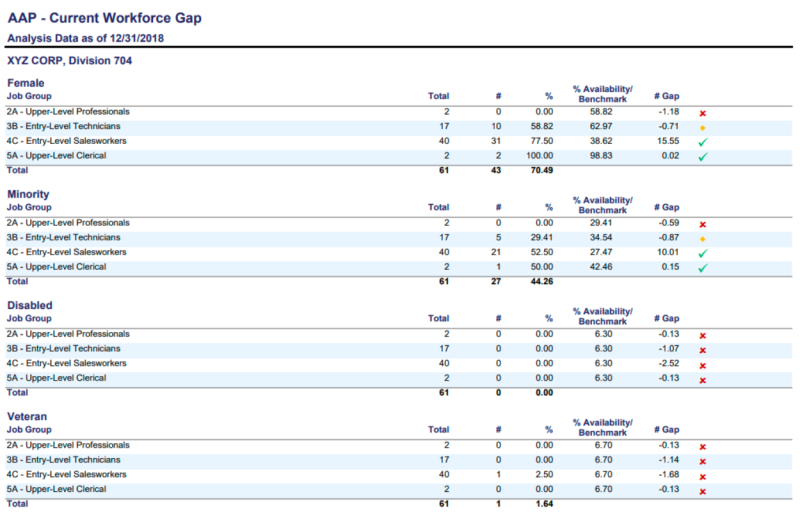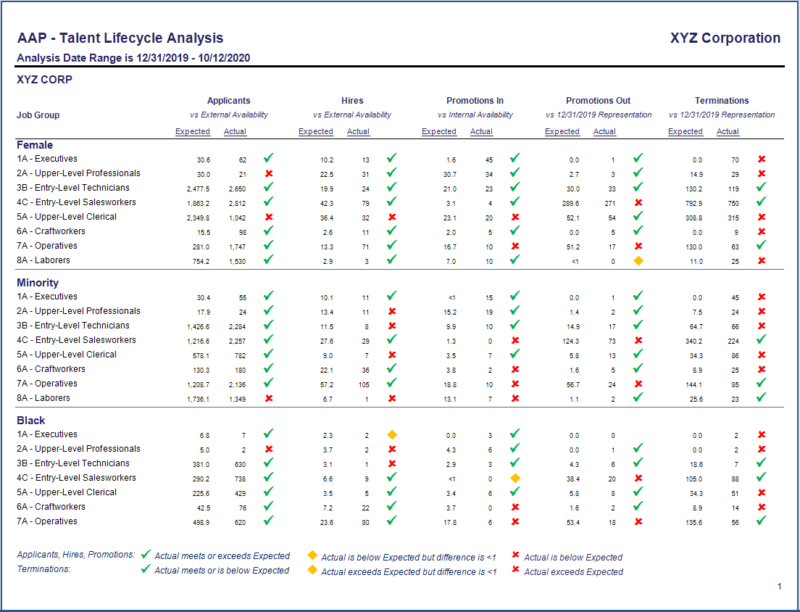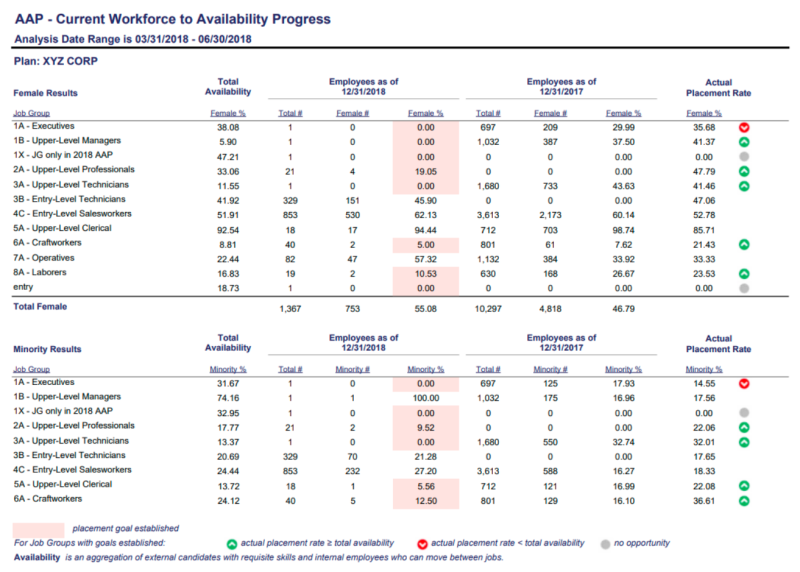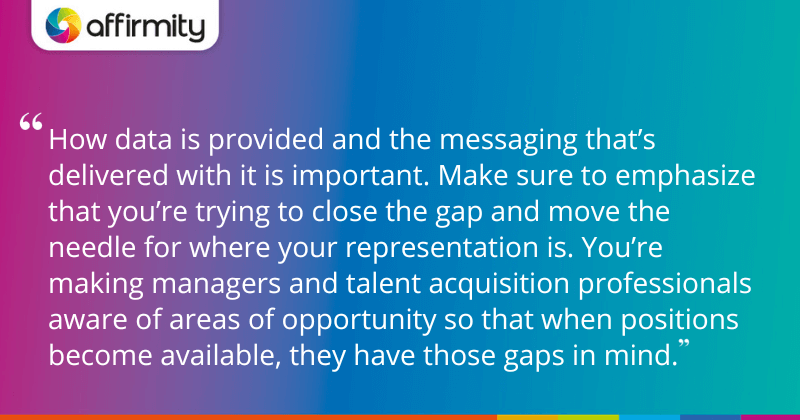When you’re working with affirmative action data on a regular basis, it can sometimes be easy to forget that most of your organization isn’t familiar with how it’s collected, or the relevance of its insights to their working lives. Nonetheless, a huge portion of your program’s potential is locked up in the relationships you must forge with people in other areas of the business. In this article we examine how to frame conversations about affirmative action data and the tools that’ll make your data easier for everyone to understand.
Get Out of the Habit of Thinking at a Macro Level
It’s easy for anyone working in compliance to get in the habit of looking at their organization and its affirmative action data from a top-level view. And when making strategic decisions it’s absolutely necessary to think in terms of establishment-based plans and larger units in order to steer the whole business toward better practices.
However, actually implementing the necessary changes has to look very different. You have to be sensitive to what individual managers need to know, breaking the problem down for maximum relevance. An establishment-based plan may be grouped in a certain way simply because of logistics and location, but when the data is shared there may be many different line managers or individuals with influence over the hiring process and other employment activities.
It’s therefore important to slice your plans in different ways, to make them more relevant and engaging for your managers. Whether affirmative action or diversity, equity, and inclusion, your goal is to make managers and individuals in critical roles aware of issues and the actions they should be taking. You can primarily achieve this with reporting, but only if those reports are straightforward, and tailored to the needs of people outside of the compliance function. At a glance it should be possible for a manager to understand “what are my problem areas” and “where am I doing well”.

The reports in Affirmity’s CAAMS enterprise affirmative action program software were built with these principles in mind. For example, the Workforce Gap report allows line managers to easily understand where they are today versus where they could be given external and internal availability through a color-coded key. A green tick means you’re ahead of availability, a red ”x” means you’re behind. To further keep things simple, the view also shows actual headcount numbers as well as percentages, so that when diving deeper into some job groups it’s still clear what is and what isn’t statistically significant—allowing priorities to be set accordingly.
MORE FROM THE BLOG | ‘How to Fairly and Safely Handle RIFs and Furloughs in an Economic Downturn’
Help Teams Understand the Journey As Well As the Destination
Helping your people understand the benchmarking behind the goals you set is an important step, but neither your current workforce nor the market for available labor are completely static. There’s a constant push-and-pull of applications, hires, promotions, and separations to help your people understand—a picture that can be quite intimidating without the right reporting.

The CAAMS’ talent lifecycle report is designed to make it easy for somebody outside of the compliance function to see the appropriate finer detail of where the problem areas are. Hires, promotions, transfers, and terminations are essential processes that managers are closely involved with, so by graphing them against major candidate pools we can help them see where progress is possible.
This view also proves highly useful as your different stakeholders partner with each other—by periodically returning to it they can see whether their current recruitment initiatives are on track, whether your selection rates match availability, and whether gaps are being closed. It also tells the story of what happens to groups once they’re in the business—is the organization losing those it hires, or promoting them at the same rate as other groups? Armed with this information, your people are more likely to be curious about the causes of any shortfalls, and the potential remedies.
AAP TIPS FROM OUR EXPERTS | ‘4 Important Actions That Will Strengthen Your Affirmative Action Plan Narratives’
Make Sure Goals Are Understood As Goals
Considering that hiring managers and other key stakeholders aren’t always as “in the weeds” as HR professionals, it’s important to continually stress that placement goals are goals, not quotas. As powerful as the data is, the reality of what can be achieved will sometimes fall short of what is theoretically possible. The last thing you want is for managers to be panicking because they believe they have to “hire x amount of people, or else”.
In this way, how data is provided and the messaging that’s delivered with it is important. Make sure to emphasize that you’re trying to close the gap and move the needle for where your representation is. You’re making managers and talent acquisition professionals aware of areas of opportunity so that when positions become available, they have those gaps in mind. The end-goal will remain filling positions with the best and most qualified candidates—you’re just making sure that when that candidate is in a certain neglected group, they’re not being missed.

Nonetheless, you want everyone to be monitoring their progress throughout the year. If budget dollars are being put towards activities such as job boards, or career fairs, you need to be able to make a judgment on whether that’s worth the effort. Having reports available to managers that show progress between current activity and the starting snapshot makes it easy to keep on top of where they’re up, down, and trending towards reaching their goals.
Make the Importance of Clean Data Clear
One thing that people outside of compliance roles don’t always understand is the extent to which data inaccuracies can cause issues when forecasting trends and addressing issues. Lost or broken records are common problems that Affirmity’s experts will often have to correct once they get the data from the client. It’s also usually necessary to investigate whether there’s an issue in the organization’s HRIS or their business processes that result in these data issues.
Though line managers will often not be involved directly with the systems or HR’s own processes, they have an important role to play. For example, during hiring, they’ll be taking interview notes along the way, and HR will need to collect those. So managers will need to be trained on the kinds of interview notes they should take, and a process established to store those notes once taken.
Similarly, when it comes to promotion decisions it’s important that there’s a record of whether other people in a pool were considered, and whether the promotion was competitive or noncompetitive. You should emphasize to your stakeholders that in the event of an audit, HR decisions may need to be defended, and records of what was happening will be needed.
LEARN ABOUT TRAINING YOUR MANAGERS | ‘How to Provide AAP Training to Recruiters & Frontline Managers’

Shape Your Approach With the Help of Thought Leaders
The principles of data clarity, cleanliness, and relevance will be helpful in working with the managers in your organization, but you may still have many aspects of your approach to define. For example, you may be unsure whether it’s best to give them access to the online platform so they can use the reports on a self-service basis. If you do, consider whether you will need to offer training, as well as what formats would be best for that. Furthermore, you’ll want to know how often you should meet in order to ensure maximum engagement.
The answers to these questions will vary from organization to organization, but you stand a better chance of getting those answers if you engage thought leaders, usually managers at a director or senior manager level. They’ll be able to steer you on how to get their people’s attention, understanding, and buy-in, as well as how your reporting systems and processes could fit into their working lives for maximum effectiveness. They’ll help you pitch the information you can provide based on their own experience of what works, as well as pointing you in the direction of existing communications methods (such as quarterly updates) which you could piggyback on.
Eventually, you’ll want to steer things towards a setup where it isn’t the sole responsibility of HR to gather and distribute these reports: you want managers to have some element of ownership. An online platform, such as Affirmity’s Complete Resource Center (CRC) software can often be the right approach because of this, especially if the platform allows for dashboards that allow you to provide the right depth of information at a glance.
Discover how Affirmity can help you prepare for affirmative action planning and audit activity. Check out our Affirmative Action Plan services or contact us for more information.
 About the Author
About the Author
Aly Ferguson is a Senior Business Consultant for Affirmity and has been with the organization for over eight years. She consults with clients in a variety of industries concerning OFCCP/EEO compliance along with diversity planning, implementation, and measurement.
